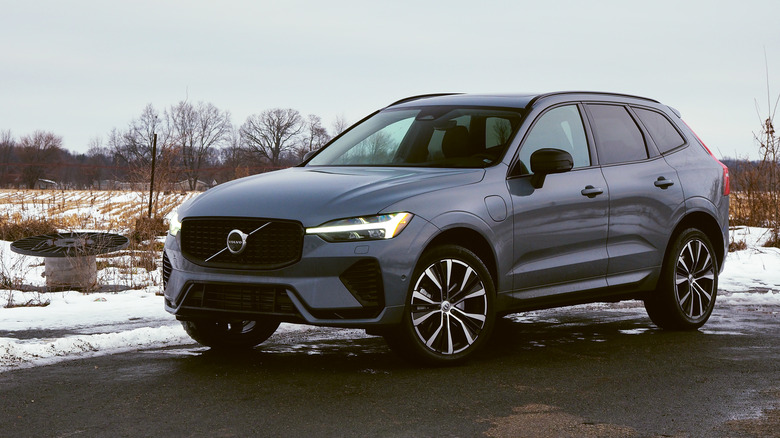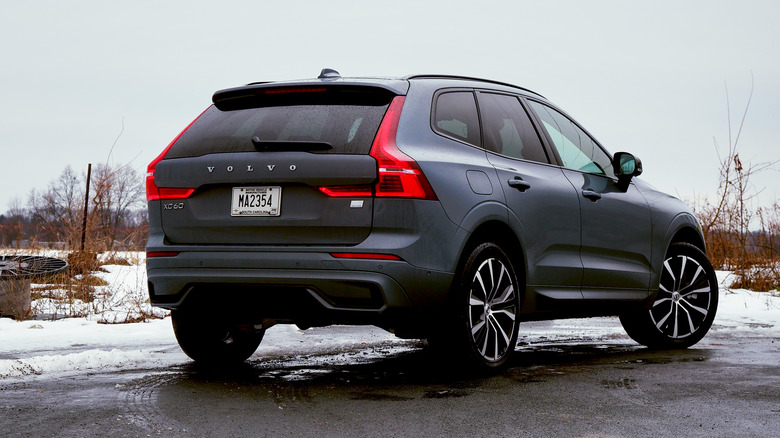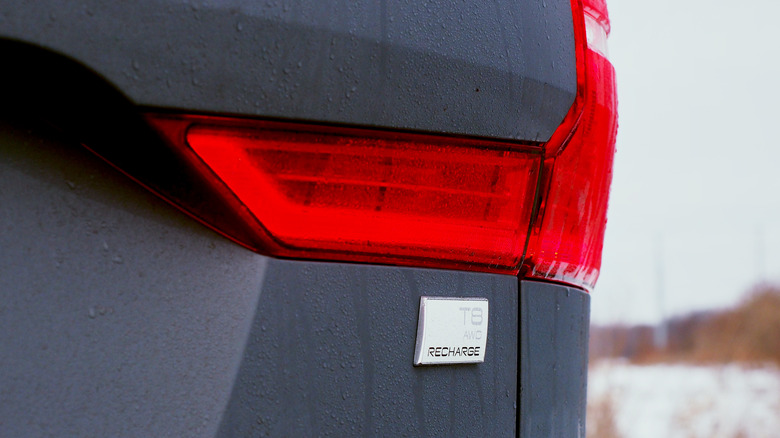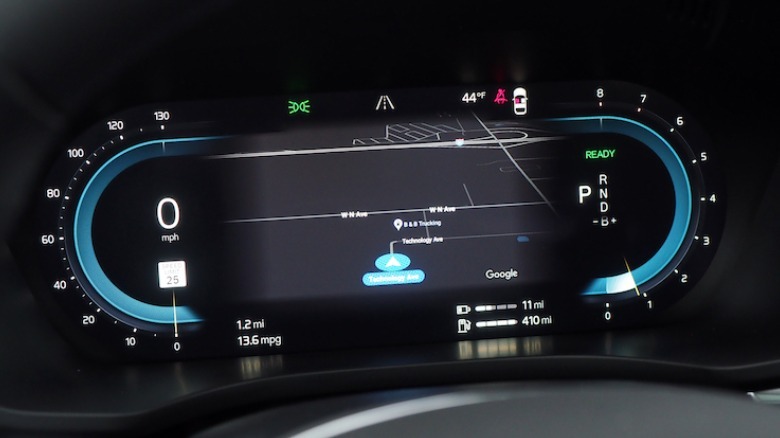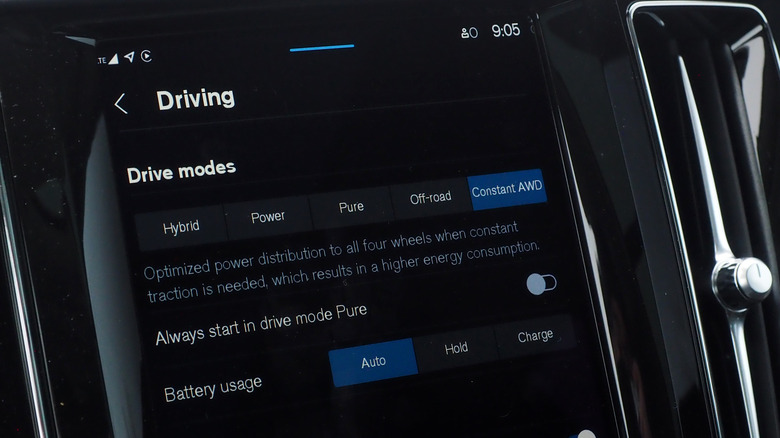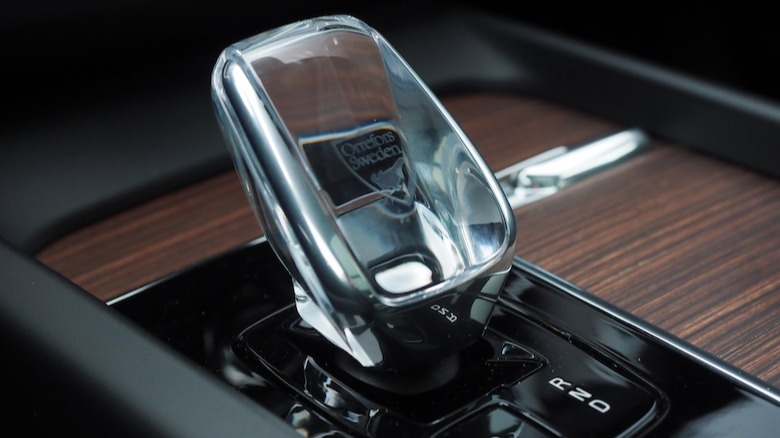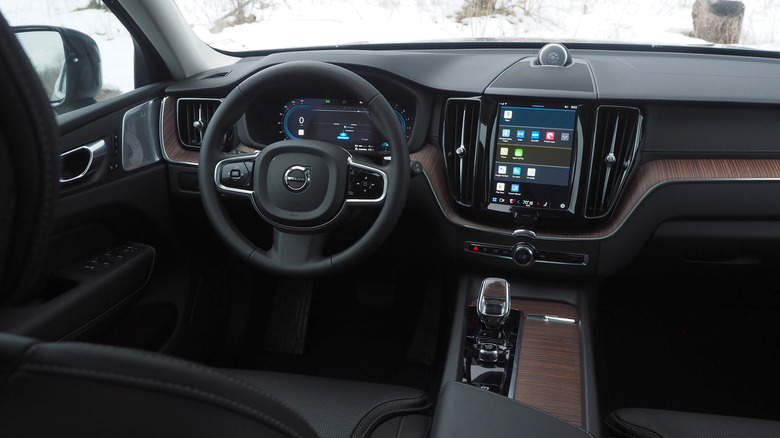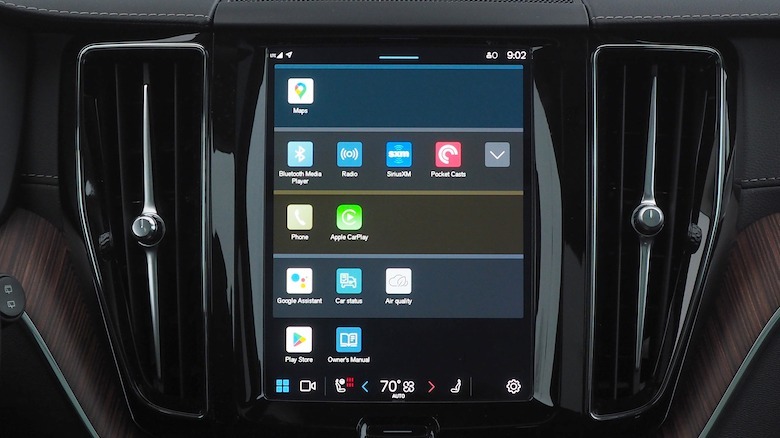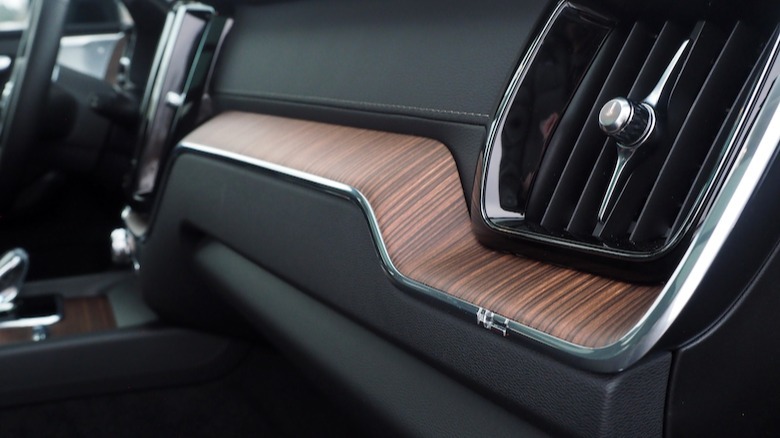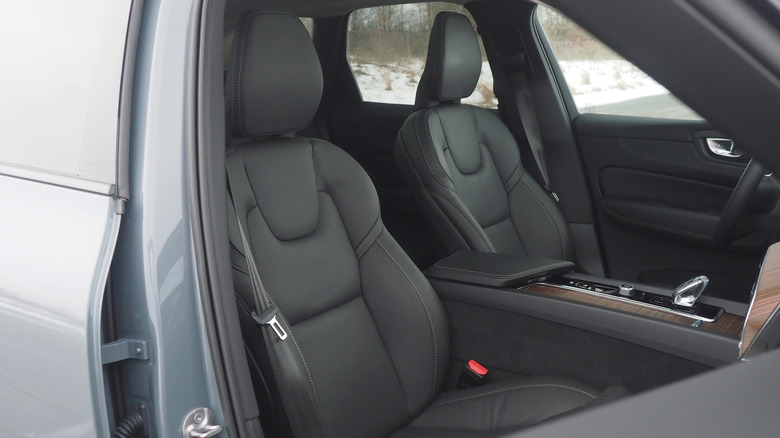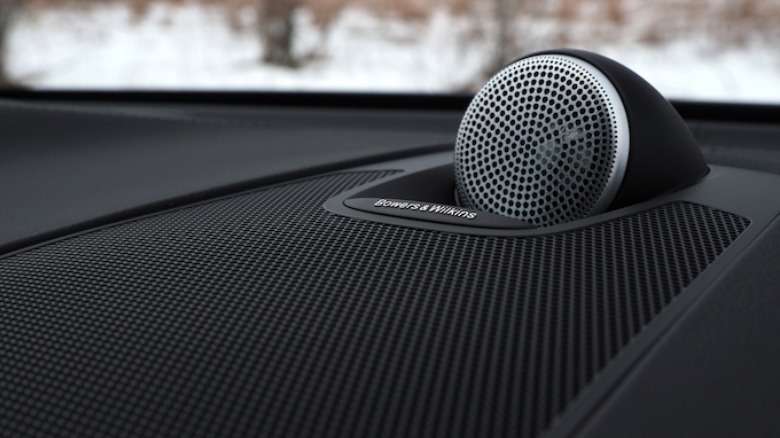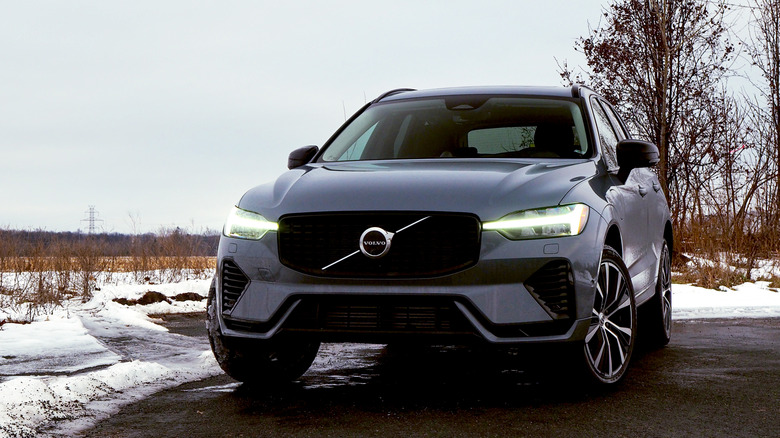2023 Volvo XC60 Recharge Review: Plug-In Hybrid Shuts Down Electric Skeptics
- Handsome styling and practical cabin
- Punchy PHEV drivetrain is eager and smooth
- Solid all-electric range for a hybrid
- Decent levels of tech and active safety
- Ride can be on the firm side
- Infotainment UI is fiddly in places
The future may be electric, but while going EV is already within reach for some, plenty of other drivers aren't quite at the point where giving up gasoline makes total sense. Regular road trips, lackluster charging infrastructure, or simply budget alone can leave fully electric cars impractical. There's still a place, then, for the plug-in hybrid.
For Volvo, that place is under its "Recharge" umbrella branding for electrified vehicles. Not every Volvo Recharge is a full EV; in fact, right now only the minority are. Most are either mild hybrids or, as in the case of this 2023 XC60 Recharge, plug-in hybrids (PHEVs).
Volvo's aesthetic hasn't changed much lately, but that's no bad thing. The Thor's hammer headlamps and smoothly sturdy bodywork leave the XC60 looking handsome and timeless. This "Dark Theme" version ditches most of the chrome in favor of blacked-out trim, while the $695 Thunder Grey Metallic paint is a worthy upgrade.
Not quite the flagship, but better for it
2023 XC60 Recharge pricing starts at $57,200 (plus $1,095 destination), though this Ultimate trim kicks off at $66,950. It isn't quite the most expensive version of the XC60 you can have, of course. Flagship of the range is the XC60 Polestar Engineered, with Volvo's tune-talented brethren working their magic to turn the hybrid crossover into something more sporty (not to mention blessed with a little extra gold trim).
It's fun to drive, but it's not quite as easy to live with as other performance-minded SUVs out there. Suspension that errs on the very firm side (and, while adjustable, can only be done so manually) and skinny rubber on 21-inch alloys add up to a crossover that truly abhors anything but smooth asphalt. The Polestar is good, but I suspect it's a little too uncompromising for a true family car.
That's why the XC60 Ultimate feels like a nice middle-ground. No, you don't get the adjustable Öhlins dampers or the Akebono brakes, or indeed the Polestar Engineered front strut bar, but the 20-inch wheels and standard suspension feel far more appropriate here. Four-corner air suspension is a $1,800 option, and it's worth adding. Best of all, though, you don't miss out on any power.
Best of gas, best of electric
Every XC60 Recharge trim gets the same T8 eAWD drivetrain, which combines a four-cylinder 2.0-liter turbocharged gas engine with two electric motors: one sandwiched between the 8-speed transmission and the gas engine, and the other driving the rear wheels. There's no mechanical link between the front and rear axles, but you still get a chunky tunnel in the cabin because that's where Volvo partly stashes the SUV's 18.8 kWh battery.
0-60 mph arrives in 4.5 seconds, courtesy of a total of 455 horsepower and 523 lb-ft of torque. They're enough to propel the XC60 Recharge ahead with genuine pace, but maybe more important is how immediate it feels. Plug-in hybrids may have less electric-only power than full EVs, but by judiciously adding their contribution of instant grunt when you're pulling away from a standing start, or to smooth out gear changes, the result feels far perkier than gas-only SUVs with far bigger engines.
The other advantage here is the bump in battery size. Volvo's old version of the T8 had a fairly small pack, but this larger version actually brings two advantages to the SUV.
Decent range and a bonus in the bank
The most obvious is range, with the EPA suggesting you could get 36 miles of electric-only driving from a full charge. Clearly, you'll need to be driving with a little restraint for that — and probably using the "B" high-regen mode, which can bring the XC60 Recharge to a full halt for one-pedal driving — and you don't get the maximum power in Pure EV-only mode, but it's a nice look ahead to what the Volvo EX90 will be offering in a couple of years time.
The onboard charger tops out at 3.7 kW; with a Level 2 charger, you're looking at around 5 hours for a complete recharge. There's no DC fast charging support, though I suspect most PHEV owners aren't using public chargers in the same way that those with fully-electric cars might.
The other advantage to the bigger battery, though, is when it comes to the sticker price. Though the perks around buying electrified vehicles are changing, for the moment you can get up to $7,500 in federal tax incentives on the XC60 Recharge. The old version, with the smaller battery, only qualified for part of that.
Volvo's transition between gas and electric power is smooth, and the gearbox is slushy in all the best ways. I just wish there was a quicker way to access the various drive modes. Older versions of the XC60 had a dedicated knob in the center console to scroll through them, but the arrival of this new infotainment system has seen them relegated to the settings pages.
Volvo doesn't mess with a good thing
It's one of my few complaints about the Android Automotive OS-based platform, which now runs on the XC60's 9-inch central touchscreen. I'm still not as much of a fan of the UI design as I am of, say, Polestar's version. It feels a little spartan in places, and some of the on-screen buttons are a bit small.
Still, the flexibility over Volvo's old Sensus system makes it easy to look beyond that. Google Maps is a huge improvement compared to the old navigation app — and, for that matter, compared to the native navigation in most cars right now — and with the arrival of Apple CarPlay support (wired, not wireless) there's less of a headache involved for iPhone users, too. Native apps for things like Spotify streaming, and the Google Play store for third-party downloads, are an example of how dashboard tech is finally being dragged into the smartphone era.
The rest of the dashboard is a familiar affair if you've been in a semi-recent Volvo. That's no bad thing, mind: incredibly comfortable seats (here clad in a choice of Nappa leather or tailored wool-blend fabric), cleanly laid-out digital instrumentation, open-pore wood, and real metal trim, and a panoramic moonroof make for a mighty comfortable place to be.
Well equipped as standard
The rear seats three, officially, but the battery-containing central tunnel eats into center foot space. The trunk offers 22.4 cu-ft of space with the second row up, or 63.3 cu-ft with the 60/40 split bench folded. There's a power tailgate with hands-free access, too, for $200.
Ultimate trim gets pretty much the whole spec sheet filled in. There's a 360-degree camera, air purifier, front and rear parking sensors, park-assist, a head-up display, and four USB-C ports (two in the front and two in the rear). Cars with leather get ventilation in the front along with the standard heated seats; with the $750 Climate Package, you also get a heated steering wheel, heated rear seats, and headlamp cleaners. If you go for the wool, you can't have ventilation, sadly.
The audio is by Harman Kardon, but the $3,200 Bowers & Wilkins Premium Sound system is a worthy — if expensive — upgrade. Standard safety tech includes blind spot warnings with steering assistance, cross-traffic alerts with auto-brake, run-off road protection and mitigation, and lane-departure warnings and assistance. Volvo's Pilot Assist — which combines hands-on adaptive cruise control and lane-keeping — is also standard.
2023 Volvo XC60 Recharge Verdict
The total is $74,690 (including $1,095 destination) before incentives. That's not cheap, no, but it's also oddly difficult to get a long-legged PHEV SUV. Toyota's RAV4 Prime is smaller and less lavish, though edges ahead with 42 miles of electric range; the Ford Escape PHEV has even less cachet, and is rated for 37 miles. The XC60 Recharge's most obvious rival is probably the Lexus NX 450h+, which has a mile more EPA electric range but isn't as practical as the Volvo.
If driving dynamics from your crossover are your primary concern, a Porsche Macan or Genesis GV70 should be on the shortlist. Electric versions of both are incoming — fully electric, not PHEVs — though we'll need to wait and see if they keep their sporty appeal as they oust internal combustion.
I'm a big proponent of fully electric cars, and I do think they're the future. All the same, it's no mystery that not everyone is ready for an EV and that EVs aren't at a state where they're the right choice for every driver. There's a whole lot to like about plug-in hybrids, and on that front, the 2023 Volvo XC60 Recharge strikes a compelling balance between usability and practicality, without sacrificing engagement from behind the wheel in the process.
